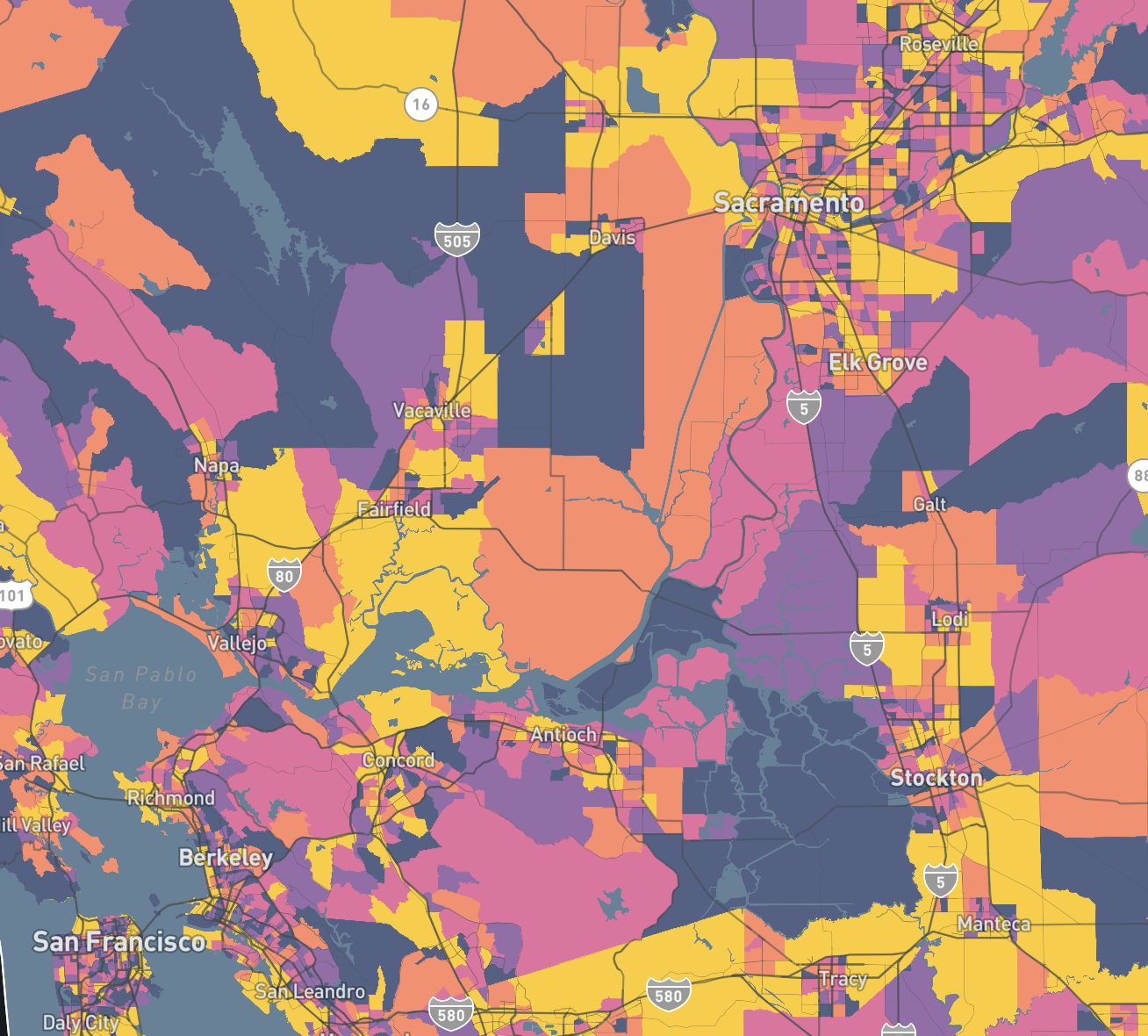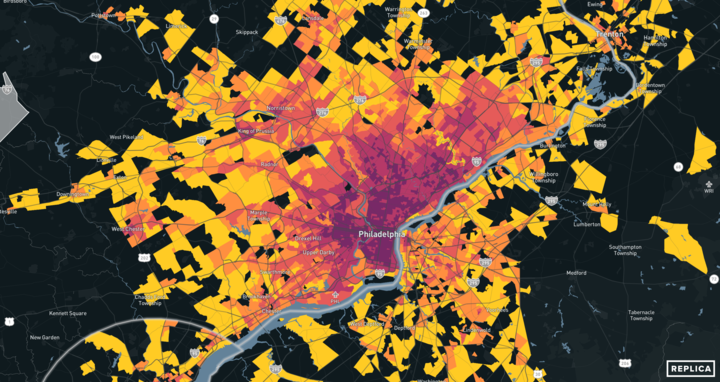Under the Bipartisan Infrastructure Law and Justice40 initiative, transportation professionals are now exploring questions about equity, climate, and economic development that were once considered too complex for travel models to answer.
Transportation planning today requires us to understand how infrastructure can connect historically disadvantaged communities to economic opportunities, support climate justice, and ensure everyone benefits from the good-paying jobs created by infrastructure investment.
These questions — and the new technologies that now make it possible to explore them — are the subject of an article by David Wasserman, Cheryl Croshere, and Karel Martens in the American Planning Association’s 2022 State of Transportation Planning report.
In “Models and the Questions We Ask,” the authors demonstrate how activity-based models (ABMs) like Replica are, for the first time, bringing high-quality data to vital considerations about mobility, equity, and the economy. In the process, they’re broadening the scope of what transportation professionals and public agencies can achieve through the planning process.
“With origins tied to the construction of the interstate highway system, our pursuit to understand the connections between human behavior and infrastructure is an under-examined part of transportation planning’s history,” they write:
[A]s transportation investments are expected to address new goals such as economic development, environmental justice, improving public health, or mitigating/adapting to climate change, the travel demand modeling practice needs to evolve. … With new challenges, we need new questions centered around who benefits from investments, the role of transport in increasing access to opportunity, transport costs and location affordability, and how the systems and processes of planning can change to meet more multifaceted goals.
Traditional trip-based travel demand models were developed to facilitate commutes. While they evolved over time, they’re still rooted in a limited and outdated understanding of mobility activity that, as the authors write, often led to the construction of highways that tore through communities in America’s urban cores.
We’re still dealing with the fallout of these harmful decisions more than half a century later. Righting these wrongs is a central component of today’s movement for transportation equity, including the U.S. Department of Transportation’s Reconnecting Communities Pilot Program.
Activity-based models like Replica bring fundamentally new capabilities that support this effort. ABMs are developed by simulating the transportation choices that people make in order to support the activities they engage in throughout the day, like going to an office, a store, and a restaurant. Modern machine learning and data practices allow us to simulate these activities in detail at a large scale, resulting in privacy-preserving disaggregated data that can be filtered by activity choices as well as demographic and socioeconomic factors of trip-takers. This results in new possibilities for transportation planning altogether.
“Once we think about the goal of transportation policy as not merely serving expected peak demand, but as a way to shape that very demand, it becomes possible to use transportation models to answer entirely new questions,” Wasserman, Croshere, and Martens write.
Those new questions include:
- Which potential projects improve access to opportunities?
- What do the travel patterns of low-income groups tell us about their mobility needs?
- Can we reframe results to inform where the potential for mode shift exists?
- Can being more open about models and their results help us reach across the table to other disciplines to find new tools and questions?
Transportation professionals rely on Replica’s nationwide activity-based model to explore questions like these every day. This new approach to modeling is what enables better insights into projects like ensuring equitable access to EV charging infrastructure, making streets safer for everyone, or adjusting to the pandemic’s historic shock to people’s mobility patterns and needs.
If you’re working on projects that ask new questions about what’s possible with transportation planning, get in touch with us at the form below to see how Replica can support your organization and its work.
Read more: “Models and the Questions We Ask” is available as a web page here, and is included starting on page 206 in the 2022 State of Transportation Planning report, available here.








